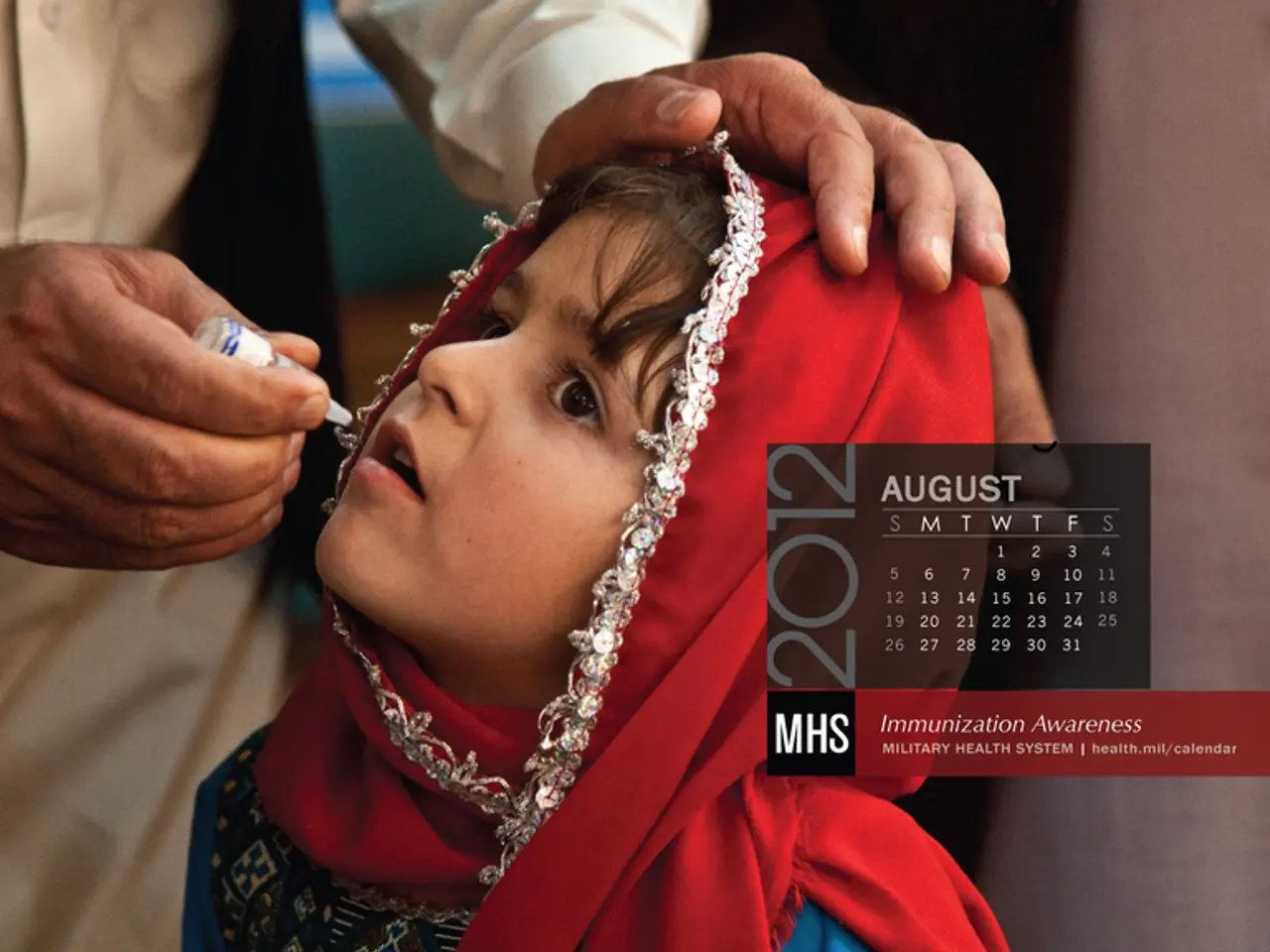Symptoms, Treatment, and Prognosis of Severe Blood Cancer Affecting White Blood Cells
Acute Monocytic Leukemia (AMoL), a subtype of Acute Myeloid Leukemia (AML), is a challenging disease that requires a multi-phase treatment approach. The primary goal of treatment is to eliminate leukemia cells, induce remission, and reduce the risk of relapse.
Diagnosis of AMoL involves specific tests such as blood and bone marrow analysis, immunophenotyping, cytogenetic analysis, cerebrospinal fluid analysis, and imaging. A person may receive an AMoL diagnosis if they have 20% or more immature cells, or blast cells, in their bone marrow or peripheral blood.
The initial treatment phase is induction therapy, which aims to rapidly eliminate leukemia cells and induce remission. The standard induction chemotherapy regimen often used is the "7+3," consisting of seven days of cytarabine and three days of an anthracycline such as daunorubicin or idarubicin. Some patients may receive targeted agents like gemtuzumab ozogamicin along with chemotherapy during induction.
Following remission, consolidation (intensification) therapy is administered to destroy any remaining leukemia cells and reduce the risk of relapse. This phase typically involves additional chemotherapy cycles.
Maintenance therapy, where lower doses of chemotherapy or other agents are administered to maintain remission over a longer term, is less commonly employed in AML compared to some other leukemias.
For cases with specific genetic mutations (such as FLT3 or IDH mutations), targeted inhibitors can be used either upfront or in relapsed/refractory settings.
In appropriate cases, stem cell transplantation can offer the best chance for cure by replacing diseased marrow after high-dose chemotherapy or radiation.
Supportive care is crucial during and after treatment as intensive chemotherapy causes low blood counts and increases infection and bleeding risk. Support includes transfusions, antibiotics, and other supportive measures.
Recently, clinical trials have explored all-oral therapies and novel drug combinations aiming to improve tolerability in older or less fit patients.
People with AMoL require constant monitoring and follow-up, whether they have complete remission or not. Symptoms of AMoL include atypically high count of white blood cells, swollen gums, skin infiltration, excessive bleeding and bruising, coagulation disorders such as disseminated intravascular coagulation (DIC), lesions outside a person's bone marrow, and central nervous system involvement.
It is important to note that AMoL affects myeloid cells, which are precursor cells that form into specific blood cells. Compared with other acute leukemias, most blast cells in AMoL are from the monocytic lineage.
The healthcare cost of having AMoL is substantial, with intensive chemotherapy and stem cell transplants being the bulk of the expenses. Additionally, people with AMoL may be more prone to having anxiety and depression.
In summary, AMoL treatment generally involves multi-phase chemotherapy starting with induction (commonly 7+3), followed by consolidation, and in appropriate cases, stem cell transplantation, with emerging targeted and oral therapies expanding options especially for specific patient groups.
- Other leukemias, such as those with specific genetic mutations like FLT3 or IDH, may benefit from targeted inhibitors that can be used either during the initial treatment or in relapsed/refractory cases.
- In addition to the physical challenges of AMoL, mental health and wellness should not be overlooked, as patients may be more susceptible to anxiety and depression.
- The science of health and wellness has continually evolved, with recent clinical trials exploring all-oral therapies and novel drug combinations aiming to improve tolerability in older or less fit patients.
- Chronic diseases like AMoL and other leukemias, along with their associated medical conditions and therapies and treatments, place a substantial burden on an individual's financial health, with intensive chemotherapy and stem cell transplants being the main culprits.




